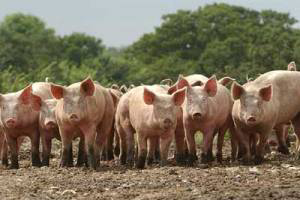Biosecurity and antimicrobial treatment in pigs are linked

A Belgian study has demonstrated and quantified a clear link between biosecurity and both production and antimicrobial treatment-related criteria in pig herds.
The researchers were from the Faculty of Veterinary Medicine at Ghent University, the Belgian Association for the Pharmaceutical Industry (Pharma.be) and Animal Health Care Flanders.
In their introduction, they state that ‘biosecurity embraces all aspects of the prevention of pathogens entering and spreading within a group of animals’. They therefore divided the concept into two parts:
- External biosecurity; relating to the prevention of pathogens entering a herd.
- Internal biosecurity; is how the spread of pathogens within a herd is reduced.
It is assumed that higher levels of biosecurity lead to improved animal health and productivity, and to a reduction of the use of antimicrobials, which are important features of sustainable animal production.
External vs external
External scores were positively associated with herd size, while internal scores were negatively associated with both ‘age of buildings’ and ‘years of experience of the farmer’, indicating that biosecurity is generally better implemented in larger herds, in more modern facilities and by younger farmers.
External and internal biosecurity scores were positively associated with daily weight gain and negatively associated with Feed Conversion Ratio (FCR) of finishing pigs. Internal scores were negatively associated with disease treatment incidence, suggesting that improved biosecurity might help in reducing the amount of antimicrobials used prophylactically.
Risk-based scoring system
The researchers quantified the biosecurity status of 95 breeder–finisher pig herds using a risk-based weighted scoring system. Data relating to herd-, farmer- and production-characteristics and to the prophylactic use of antimicrobials were also collected.
The average external biosecurity score (measures to prevent pathogens from entering a herd) was 65 (range, 45–89) and the average internal score (measures to reduce the within-herd spread of pathogens) was 52 (range, 18–87).
The research was published in The Veterinary Journal.











